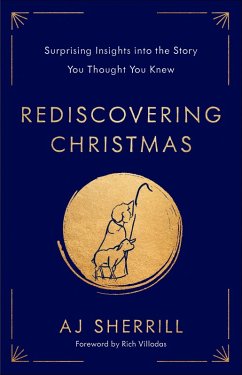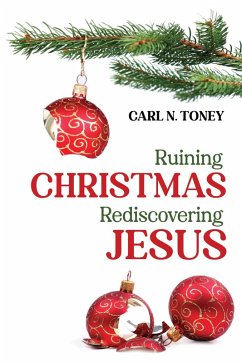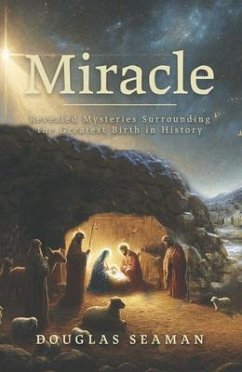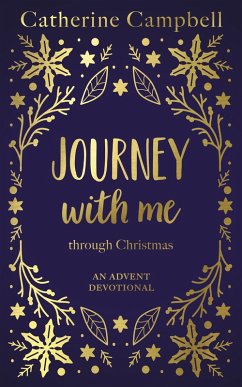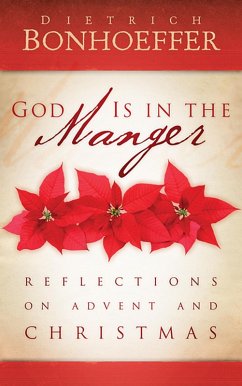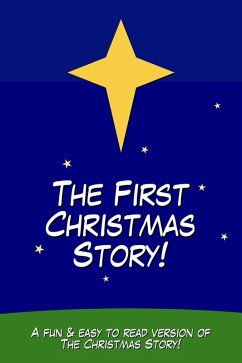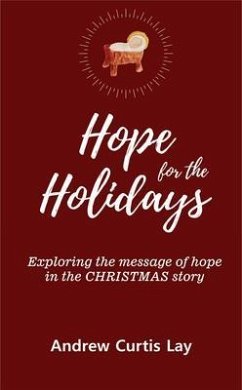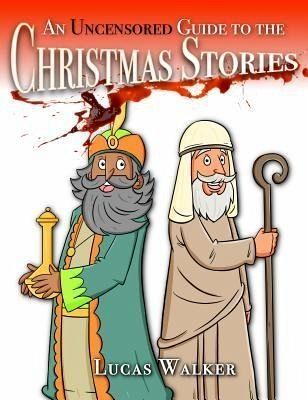
An Uncensored Guide to the Christmas Stories (eBook, ePUB)

PAYBACK Punkte
2 °P sammeln!
This is a short book which retells the Bible's Christmas stories and investigates their similarities and differences. The stories are illustrated with cartoons that include scenes that are usually absent from children's books such as the circumcision of Jesus and a headless dove being prepared for a sacrifice. However, the illustration of Herod's massacre of boys in Bethlehem doesn't show any blood.Since the stories are retold, the book is suitable for readers who have no knowledge of them. It also highlights some other parts of the stories that casual readers might not be aware of.After a ver...
This is a short book which retells the Bible's Christmas stories and investigates their similarities and differences. The stories are illustrated with cartoons that include scenes that are usually absent from children's books such as the circumcision of Jesus and a headless dove being prepared for a sacrifice. However, the illustration of Herod's massacre of boys in Bethlehem doesn't show any blood.
Since the stories are retold, the book is suitable for readers who have no knowledge of them. It also highlights some other parts of the stories that casual readers might not be aware of.
After a very short summary of the Christmas stories told by Matthew and Luke, it looks at the similarities among the stories. The stories both fulfill some prophecies such as the virgin birth, the birth being in Bethlehem and the Messiah being a descendent of King David.
Besides a handful of similarities, the stories are very different. The distinct elements of Matthew's story can be summarized as being about kings, wise men and dreams. Luke's story is about priests, angels and shepherds. It appears as if their prophecies were fulfilled in independent ways leading to these quite distinct stories.
After an in-depth retelling of the stories, it looks into the prophecy about the virgin birth. That section begins by looking at whether the virgin birth was mentioned elsewhere in the New Testament. It goes on to look into the Catholic's claim that Mary never lost her virginity. Finally, it looks at what the Quran has to say about Mary's virginity and her visit by the angel Gabriel.
Next, the journeys of Mary and sometimes Joseph and Jesus are explored. It mentions Mary's three month stay at her relative Elizabeth's house while they were both pregnant. Towns and cities in the journeys in Matthew and Luke are shown on maps. Various topics are discussed such as a crowd in the book of John being sure that Jesus wasn't from Bethlehem.
After this comes perhaps the most difficult apparent contradiction in the stories to explain - the genealogies. Matthew and Luke detail Jesus' ancestors with long lists. Between King David and Jesus' father Joseph, the names in the genealogies are almost completely different. Possible explanations are looked at including the favorite amongst Christian apologists - where Luke was actually talking about Mary's genealogy, not Joseph's.
Then, there are the lengthy "songs" of Mary, Elizabeth and Zacharias. They are quoted in full, going on for dozens of verses. This section also looks at how Mary was related to Elizabeth, suggesting that Jesus was a relative of Elizabeth's son, John the Baptist. It also questions whether it is reasonable to believe that these lengthy songs were recorded accurately decades later in Luke, especially considering that Mary wasn't around during Zacharias' song.
After that is a section looking into when Jesus was born. It appears there is a ten year difference in the date based on historical sources. It also looks at why we celebrate Jesus' birthday on December the 25th.
The next sections are about the different ruling Herods, lowly vs regal beginnings, and Jesus being the Messiah.
The book then begins to wrap up with a section looking into why things were left out in the two stories. It suggests that the authors either weren't aware of it, deliberately decided not to include it or it wasn't factual.
Finally, the conclusion explores the reasons why the reader would believe the two Christmas stories are so different and whether the stories are completely factual.
The author is a former creationist and is now an agnostic, who still has an interest in the Bible. The aim is to also interest readers in this area of the Bible, whether they are believers or non-believers.
Since the stories are retold, the book is suitable for readers who have no knowledge of them. It also highlights some other parts of the stories that casual readers might not be aware of.
After a very short summary of the Christmas stories told by Matthew and Luke, it looks at the similarities among the stories. The stories both fulfill some prophecies such as the virgin birth, the birth being in Bethlehem and the Messiah being a descendent of King David.
Besides a handful of similarities, the stories are very different. The distinct elements of Matthew's story can be summarized as being about kings, wise men and dreams. Luke's story is about priests, angels and shepherds. It appears as if their prophecies were fulfilled in independent ways leading to these quite distinct stories.
After an in-depth retelling of the stories, it looks into the prophecy about the virgin birth. That section begins by looking at whether the virgin birth was mentioned elsewhere in the New Testament. It goes on to look into the Catholic's claim that Mary never lost her virginity. Finally, it looks at what the Quran has to say about Mary's virginity and her visit by the angel Gabriel.
Next, the journeys of Mary and sometimes Joseph and Jesus are explored. It mentions Mary's three month stay at her relative Elizabeth's house while they were both pregnant. Towns and cities in the journeys in Matthew and Luke are shown on maps. Various topics are discussed such as a crowd in the book of John being sure that Jesus wasn't from Bethlehem.
After this comes perhaps the most difficult apparent contradiction in the stories to explain - the genealogies. Matthew and Luke detail Jesus' ancestors with long lists. Between King David and Jesus' father Joseph, the names in the genealogies are almost completely different. Possible explanations are looked at including the favorite amongst Christian apologists - where Luke was actually talking about Mary's genealogy, not Joseph's.
Then, there are the lengthy "songs" of Mary, Elizabeth and Zacharias. They are quoted in full, going on for dozens of verses. This section also looks at how Mary was related to Elizabeth, suggesting that Jesus was a relative of Elizabeth's son, John the Baptist. It also questions whether it is reasonable to believe that these lengthy songs were recorded accurately decades later in Luke, especially considering that Mary wasn't around during Zacharias' song.
After that is a section looking into when Jesus was born. It appears there is a ten year difference in the date based on historical sources. It also looks at why we celebrate Jesus' birthday on December the 25th.
The next sections are about the different ruling Herods, lowly vs regal beginnings, and Jesus being the Messiah.
The book then begins to wrap up with a section looking into why things were left out in the two stories. It suggests that the authors either weren't aware of it, deliberately decided not to include it or it wasn't factual.
Finally, the conclusion explores the reasons why the reader would believe the two Christmas stories are so different and whether the stories are completely factual.
The author is a former creationist and is now an agnostic, who still has an interest in the Bible. The aim is to also interest readers in this area of the Bible, whether they are believers or non-believers.
Dieser Download kann aus rechtlichen Gründen nur mit Rechnungsadresse in A, D ausgeliefert werden.




